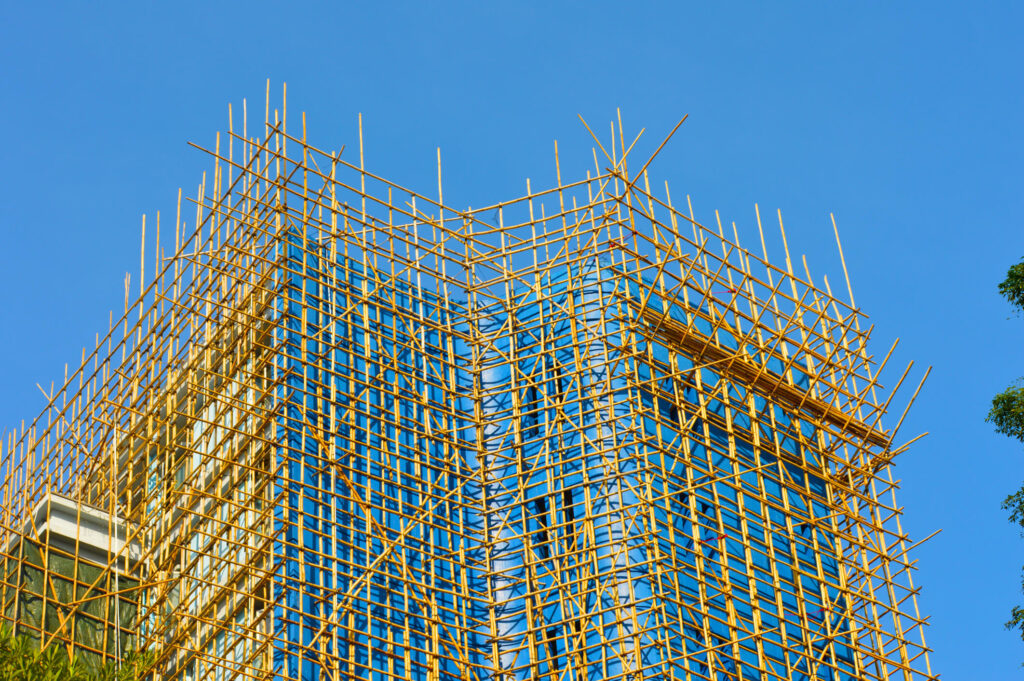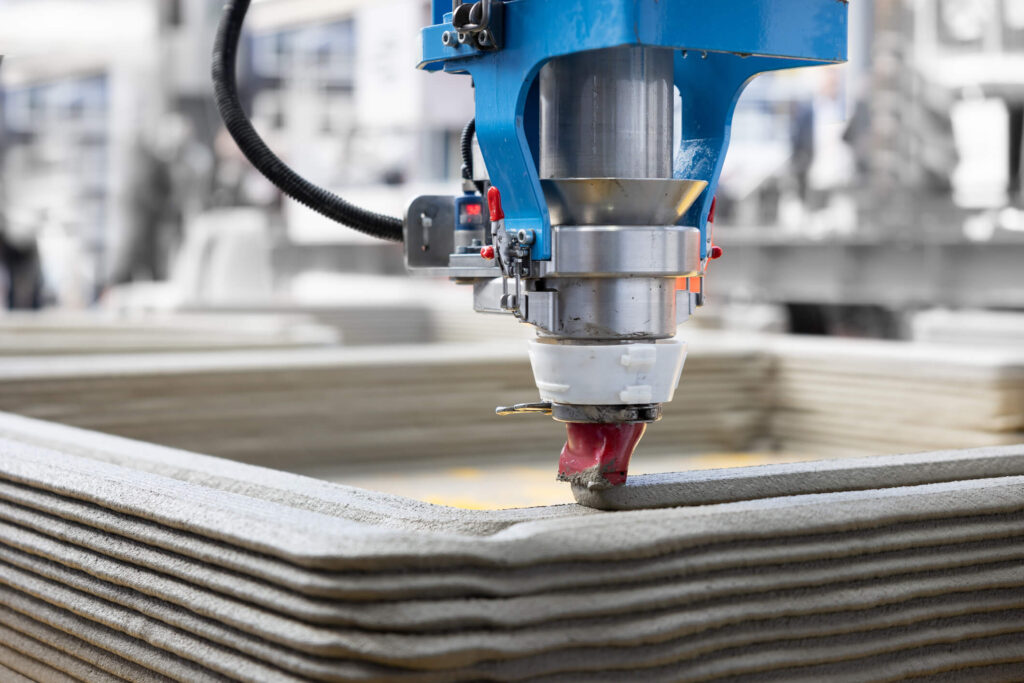Construction is the core of any building, and it is one of the most important factors in determining the overall sustainability of a structure.
Modern construction has become a paramount concern, driving the industry towards the adoption of building materials that promise lower carbon footprints, enhanced energy efficiency, and waste reduction. This shift is in line with the rising need for long-lasting, cost-effective, and environmentally friendly constructions that benefit people as well as the environment. It also complies with environmental regulations. As sustainable development becomes a beacon for future projects, exploring the top sustainable building materials becomes essential for professionals looking to make informed decisions in their construction practices.
The world of sustainable building materials is explored in this article, which highlights cutting-edge materials like mycelium or 3D-printed concrete that are making significant advancements in circular economy applications, as well as more widely utilised options like bamboo, cork, and recycled plastic.
The Impact of Construction on Environment
The construction sector is enormous, both in terms of global carbon emissions and natural resource consumption. According to the World Economic Forum, 39% of the world’s energy-related carbon emissions are attributed to buildings; 28% are from their operations, and 11% are from materials and construction.
By using resources that demand less energy for production and maintenance, sustainable building materials help offset the harmful consequences and lower the total environmental footprint of the buildings. Materials that require little processing, such as bamboo and cork, are gathered from renewable sources, saving energy and decreasing waste.
Understanding Sustainable Materials

Green building materials, also known as sustainable building materials, are essential to contemporary building techniques meant to reduce their negative effects on the environment. These materials are crucial for fostering a sustainable future in addition to minimising harm. Their attributes include robustness and reusability. Through local sourcing and natural resources, they promote environmental sustainability. Beyond their positive effects on the environment, these materials are important because they promote safer construction methods and long-term cost reductions.
The resilience, recyclability, and local supply of these building materials are among key characteristics of sustainable materials. Over time, durability lowers material waste by ensuring that the materials can tolerate a variety of environmental conditions without deteriorating and necessitating fewer replacements. Recyclability promotes a circular economy that prioritises resource efficiency and waste reduction by enabling materials to be repurposed at the end of their life cycle. Using locally produced materials also boosts local economies and reduces carbon emissions related to transportation.
Commonly Used Sustainable Materials
Bamboo
Bamboo is a unique building material that is very sustainable due to its rapid growth and strong physical characteristics. With a growth rate of up to 30 centimetres per day, it is among the fastest-growing plants in the world and can reach maturity in a few months.

Compared to conventional building materials, bamboo has a substantially smaller environmental impact because of its quick renewal and low use for pesticides. Its structural uses are numerous and include pillars, beams, and even concrete constructions where it serves as reinforcement in place of steel as needed. Bamboo is a popular material in areas vulnerable to earthquakes and storms, like China or the Philippines, because of its remarkable tensile strength, which is on par with steel’s.
Cork
Cork’s renewable nature and low environmental impact make it an extremely sustainable building material. Regenerated every 9–12 years, cork is a renewable resource that is harvested from the bark of cork oak trees without causing harm to the plants themselves. Because of this sustainable harvesting method, cork oak trees may keep taking in CO2, aiding in carbon sequestration and promoting biodiversity.
Because of its inherent qualities, cork makes a great material for flooring, acoustic treatments, and insulation in buildings. It offers good thermal and acoustic insulation and is strong and lightweight. Furthermore, cork resists fire, dampness, and pests, which lessens the need for chemical treatments.
Recycled Plastic
The building industry is beginning to recognise recycled plastic for its strength, low weight, and adaptability in design. By using recycled plastic, you may lessen the amount of waste that ends up in landfills and preserve natural resources like petroleum, which is heavily utilised to make new plastic. The video below by Business Insider presents how bricks are made from plastic waste, helping the environment but also creating more jobs and reducing waste.
Recycled plastic can be used in construction to create high-performance building materials with exceptional thermal and energy efficiency, like insulating panels and structural elements. Because plastic uses less energy for heating and cooling buildings, its life cycle can drastically reduce CO2 emissions. Furthermore, the versatility of recycled plastic enables creative architectural uses that improve a building’s functional and aesthetic aspects.
Cross-Laminated Timber
In sustainable building, cross-laminated timber (CLT) is quickly becoming a ground-breaking material. CLT is very strong and stable since it is made by layering and glueing several sheets of wood at right angles. By storing carbon throughout its existence, it is not only more environmentally friendly than steel and concrete, but it is also lighter.
Because of its resistance to fire and its capacity to retain structural integrity in extreme heat, CLT is a safe material choice for building construction. Since CLT panels are prefabricated, they can be quickly assembled on site, cutting down on construction time and the environmental damage that comes with using traditional building techniques. CLT is positioned to be a major player in the future of environmentally friendly building, with the ability to reduce global warming by up to 26% when compared to conventional materials.
Stone
For thousands of years, stone has been used as a fundamental material in construction because of its enduring nature and low need for processing. Being a natural substance, it can be produced without the need for extra resources and can be totally recycled at the end of its life cycle. Because of its long lifespan and resistance to deterioration under a variety of climatic circumstances, stone is used in building, which promotes sustainability.
Stone’s aesthetic attributes can also improve a building’s architectural attractiveness and support sustainable building methods. It is an environmentally friendly material for modern construction because it can be acquired locally, which further lowers transportation-related carbon emissions.
Innovative and Emerging Sustainable Materials
Mycelium
Mycelium has emerged as a ground-breaking material in the field of sustainable construction, providing a number of structural and environmental advantages. This organic substance, which comes from the root structure of a fungus, is praised for using little energy and leaving little carbon imprint. Agricultural waste is used to develop mycelium, providing a nutrient-rich substrate that enables the fungi to strengthen and change into long-lasting building materials like cladding and bricks. Have a look at the video below to learn more about the amazing properties and how they are stronger than concrete.
In addition, researchers are exploring mycelium for eco-friendly cladding that resists fire and heat transfer, offering a safer alternative to traditional materials. This innovative use of fungi not only supports circular economy principles but also aligns with efforts to reduce the environmental impact of building materials.
Pollution-Absorbing Bricks
“Breathe bricks,” or pollution-absorbing bricks, are made to enhance the quality of the air within buildings. Through an integrated cyclone filtering mechanism, these bricks serve as passive air filtration devices, collecting dust and pollutants. Without the need for mechanical parts, the system’s central component—a brick coupler composed of recycled plastic—directs airflow and filters out impurities to provide better indoor air.
These bricks are especially useful for usage in developing areas where air quality is an issue because they are not only economical and environmentally friendly, but also efficient at filtering out tiny particles. Due to rising government programmes supporting green building practices and increased awareness of environmental sustainability, the global market for pollution-absorbing bricks is growing.
3D-Printed Concrete
3D printing is one of the most interesting and versatile technologies that is currently being developed. From 3D printed electronics to 3D printed houses, 3D printed transportation and even 3D bioprinting, which enables the printing of biological tissues and organs, additive manufacturing has the potential to transform almost every industry.

However, the topic of this article is about construction and materials used in that industry, so the significant technological development in construction is 3D concrete printing (3DCP). It lowers wasteful material usage and boosts design adaptability. Owing to its reduced carbon emissions and material consumption, low-carbon concrete is becoming more and more popular for 3D printing. By eliminating the need for traditional formwork, this method reduces its negative effects on the environment while enabling the creation of complex structures. Due to its high mortar content and usage of virgin raw materials, 3DCP’s sustainability is debated. Researchers are working to improve sustainability through the use of recycled resources and the substitution of geopolymers for ordinary Portland cement (OPC).
Benefits of Using Sustainable Materials in Construction
Environmental Benefits
Sustainable materials reduce the environmental impact of construction by conserving resources, minimising waste, and lowering carbon emissions. Using recycled or renewable materials decreases the industry’s footprint and prevents habitat destruction, soil erosion, and ecosystem damage associated with extracting traditional materials. These materials require less energy for production and transport, further reducing carbon emissions.
Economic Benefits
Sustainable materials are more cost-effective in the long run and have positive environmental effects. They can raise a property’s value by 8–12% and frequently come with regulatory incentives as well as cheaper maintenance and repair costs. Furthermore, using sustainable materials lowers project costs and increases profitability by consuming less resources overall and for trash management.
Health Benefits
Because sustainable building materials don’t contain the dangerous chemicals included in traditional materials, they promote healthier indoor environments. Because they don’t contain volatile organic compounds (VOCs), non-toxic choices like clay and lumber enhance the quality of the air indoors. By enhancing natural light, thermal comfort, and acoustic comfort, buildings made with these materials promote wellbeing and lower the risk of chronic illnesses.
Conclusion
Cutting-edge materials that offer sustainable substitutes for conventional materials, such mycelium, pollution-absorbing bricks, and 3D-printed concrete, are transforming the construction industry. These developments demonstrate the industry’s commitment to sustainability and innovation, encouraging green building techniques and harmonising with both environmental and financial objectives.
In order to solve pressing environmental issues, sustainable materials must be used. Realising the advantages these materials offer to the economy and environment, builders, developers, and industry stakeholders are urged to invest in them. With this change, the built environment will become more excellent and sustainable, and it will also be more resilient and environmentally friendly in the future.
FAQs
Reclaimed wood, laminated wood, recycled plastic, stone, cob, cork, adobe brick, and bamboo—all renewable and adaptable—are among the sustainable materials commonly used in building.
If a building material reduces its environmental impact over the course of its life cycle, it is deemed sustainable. This entails giving priority to renewable resources in order to lessen the depletion of limited raw materials.
The most popular sustainable construction materials are cork, recycled glass, rammed earth, recycled steel, hempcrete (made from hemp plant stalks), bamboo, which is valued for its renewability and long history of use, and straw bale.
Steel, cement, concrete, ready-mix concrete, binding wires, wood, stone, brick blocks, and aggregate are among the materials commonly used in modern buildings.










